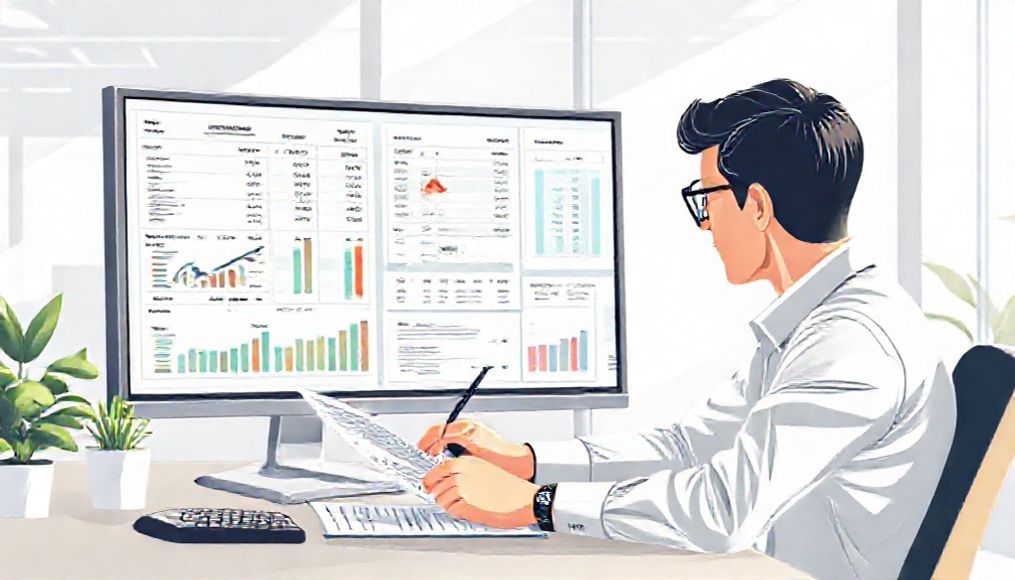Smart Financial Planning for Buying a Car: A Comprehensive Guide
Buying a car, whether new or used, is a significant financial decision that requires careful planning and a comprehensive assessment of various aspects. This guide aims to provide you with the knowledge and tools necessary to make an informed decision that aligns with your financial situation and future goals.
Chapter 1: Identifying the Need and Purpose of Buying a Car
Before diving into the details of financing and budgets, it is essential to identify the real need for buying a car. Is it a necessity for daily commuting, or just a desire for entertainment? Defining the purpose will help you narrow your search and make a more rational decision.
1.1 Assessing Basic Needs:
- Purpose of Use: Will you use the car for daily commuting to work, or for travel and long trips?
- Number of Passengers: How many people will use the car regularly?
- Distance Traveled: How many kilometers do you expect the car to travel monthly?
- Driving Conditions: Will you use the car in the city, or on rough roads?
1.2 Setting Priorities:
After assessing needs, determine the priorities you want in the car. Is performance important, or fuel economy, or safety factors?
Chapter 2: Determining the Appropriate Budget
Determining the budget is the cornerstone of financial planning for buying a car. The budget should be realistic and take into account all expenses related to the car, not just the purchase price.
2.1 Calculating Monthly Income and Fixed Expenses:
Start by calculating your net monthly income (after taxes) and then identify all fixed expenses such as rent, utility bills, other loan installments, etc. The difference between income and fixed expenses is the amount available to cover car expenses.
2.2 Determining the Amount Allocated to the Car:
It is recommended to allocate a reasonable percentage of monthly income to the car, not exceeding 15-20%, taking into account all expected expenses.
2.3 Expected Car Expenses:
- Monthly Car Installment (if financing): Get different financing offers and compare them.
- Insurance: The price of insurance varies depending on the type of car and driving record.
- Fuel: Estimate monthly fuel consumption based on the distance traveled.
- Maintenance: Consider the costs of routine maintenance and potential repairs.
- Licensing and Registration: Annual licensing and registration fees.
- Parking: The cost of parking at work or home.
Chapter 3: Searching for the Right Car
After determining the budget, start looking for the car that meets your needs and fits your budget. Compare different types and models, and read reviews.
3.1 New or Used Car?
Each option has its advantages and disadvantages. A new car offers the latest technology and manufacturer's warranty, but it loses a significant portion of its value as soon as it leaves the dealership. A used car is cheaper, but it may require more maintenance.
3.2 Comparing Types and Models:
Use car comparison sites and used car sales sites to gather information and compare prices and specifications.
3.3 Reading Reviews:
Look for user reviews and professional reviews of the cars you are interested in. These reviews can give you an idea of reliability, performance, and potential problems.
Chapter 4: Financing or Cash Payment?
After choosing the car, it's time to decide on the payment method. Will you pay in cash, or will you finance the car?
4.1 Advantages and Disadvantages of Cash Payment:
Cash payment saves you financing interest and gives you full ownership of the car. However, it may require accumulating a large sum of money.
4.2 Available Financing Options:
- Car Loans from Banks: Compare offers from different banks to get the best interest rate and repayment terms.
- Financing from Car Companies: Car companies often offer special financing offers, but be sure to compare them to bank offers.
- Leasing: An option that allows you to use the car for a specific period in exchange for monthly payments, with the option to buy it at the end of the contract.
4.3 Calculating the Total Cost of Financing:
Before making a financing decision, calculate the total cost of the loan, including interest and fees. Compare the total cost of cash payment and financing to determine the best option.
Chapter 5: Negotiating the Price
Negotiating the price is an important part of the car buying process. Don't hesitate to negotiate to get the best possible deal.
5.1 Researching the Average Market Price:
Before starting negotiations, research the average market price for the car you are interested in. Use used car sales sites and car valuation sites to get accurate information.
5.2 Using Competitor Offers:
If you have offers from other dealers, use them as leverage to negotiate the price.
5.3 Focusing on the Total Price, Not Just the Monthly Installment:
When negotiating financing, focus on the total price of the car and not just the monthly installment. Sellers may try to entice you with a low monthly installment, but it may be at the expense of the total car price.
Chapter 6: Inspecting the Car Before Buying (For Used Cars)
If you are buying a used car, it is essential to inspect it thoroughly before buying to ensure its condition and avoid potential problems.
6.1 Visual Inspection:
Inspect the car from the outside and inside for any signs of damage, rust, or leaks.
6.2 Mechanical Inspection:
Take a trusted mechanic to inspect the engine, transmission, suspension, and brakes.
6.3 Checking the Car History:
Request a car history report to check for past accidents or legal problems.
Chapter 7: Car Insurance
Car insurance is mandatory in most countries, and it provides you with financial protection in the event of an accident or theft.
7.1 Types of Car Insurance:
- Comprehensive Insurance: Covers damage to your car and the other party's car in the event of an accident, as well as theft, fire, and natural disasters.
- Third-Party Insurance: Covers damage to the other party's car only in the event of an accident you are responsible for.
7.2 Comparing Different Insurance Offers:
Get offers from different insurance companies and compare prices and coverages before making a decision.
7.3 Factors Affecting Insurance Price:
- Type of Car: Sports and luxury cars are usually more expensive to insure.
- Driving Record: Drivers with a clean record get better insurance rates.
- Age: Younger drivers usually pay higher insurance rates.
- Place of Residence: Some areas are considered more prone to accidents and theft, leading to higher insurance rates.
Chapter 8: Registration and Licensing
After buying the car, you must register and license it legally.
8.1 Documents Required for Registration and Licensing:
- Sales Contract: A copy of the sales contract between you and the seller.
- Insurance Certificate: A copy of the car insurance certificate.
- Proof of Identity: A copy of your ID card or passport.
- Proof of Residence: A recent utility bill or lease agreement.
8.2 Registration and Licensing Fees:
Registration and licensing fees vary depending on the type of car and the country.
Chapter 9: Tips to Reduce Car Ownership Costs
There are many ways to reduce the costs of owning a car in the long run.
9.1 Economical Driving Style:
Avoid sudden acceleration and hard braking, and maintain a constant speed to reduce fuel consumption.
9.2 Routine Maintenance:
Perform routine maintenance on the car regularly to keep it in good condition and avoid costly repairs.
9.3 Comparing Fuel Prices:
Compare fuel prices at different gas stations to get the best price.
9.4 Using Alternative Spare Parts:
In some cases, alternative spare parts can be used that are cheaper than original spare parts, but make sure of their quality and suitability for the car.
Chapter 10: When Should You Consider Selling the Car?
There are several factors that may lead you to consider selling the car.
10.1 High Maintenance and Repair Costs:
If maintenance and repair costs become exorbitant, it may be better to sell the car and buy a new or used car in better condition.
10.2 Changing Needs:
If your needs change, such as an increase in the number of family members or moving to a location that requires a different car, it may be necessary to sell the current car and buy another car.
10.3 Car Depreciation:
If the value of the car has decreased significantly, it may be better to sell it before it loses more value.
By following these steps and tips, you can plan smartly financially to buy a car and achieve your dream at the lowest cost and best terms.




